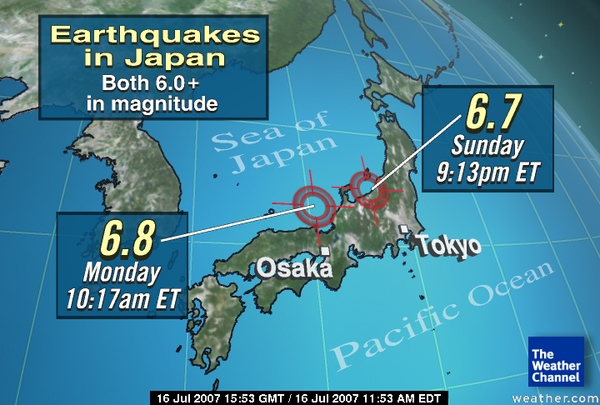 |
| Earthquake in japan 2011 |
For more than two terrifying, seemingly endless minutes Friday, the most powerful earthquake ever recorded in Japan shook apart homes and buildings, cracked open highways and unnerved even those who have learned to live with swaying skyscrapers. Then came a devastating tsunami that slammed into northeastern Japan and killed hundreds of people.
The violent wall of water swept away houses, cars and ships. Fires burned out of control. Power to cooling systems at two nuclear power plants was knocked out, forcing thousands of nearby residents to be evacuated. A boat was caught in the vortex of a whirlpool at sea.
The death toll rose steadily throughout the day, but the true extent of the disaster was not known because roads to the worst-hit areas were washed away or blocked by debris and airports were closed.
After dawn Saturday, the scale of destruction became clearer.
Aerial scenes of the town of Ofunato showed homes and warehouses in ruins. Sludge and high water spread over acres of land, with people seeking refuge on roofs of partially submerged buildings. At one school, a large white "SOS" had been spelled out in English.
Chief Cabinet Secretary Yukio Edano said an initial assessment found "enormous damage," adding that the Defense Ministry was sending troops to the hardest-hit region.
President Barack Obama pledged U.S. assistance following what he called a potentially "catastrophic" disaster. He said one U.S. aircraft carrier is already in Japan and a second was on its way. A U.S. ship was also heading to the Marianas Islands to assist as needed, he added.
The entire Pacific had been put on alert — including coastal areas of South America, Canada and Alaska — but waves were not as bad as expected.
The magnitude-8.9 offshore quake struck at 2:46 p.m. local time and was the biggest to hit Japan since record-keeping began in the late 1800s. It ranked as the fifth-largest earthquake in the world since 1900 and was nearly 8,000 times stronger than one that devastated Christchurch, New Zealand, last month, scientists said.
The quake shook dozens of cities and villages along a 1,300-mile (2,100-kilometer) stretch of coast and tall buildings swayed in Tokyo, hundreds of miles from the epicenter. Prime Minister Naoto Kan was attending a parliamentary session at the time.
"I thought I was going to die," said Tokyo marketing employee Koto Fujikawa. "It felt like the whole structure was collapsing."
Fujikawa, 28, was riding a monorail when the quake hit and had to later pick her way along narrow, elevated tracks to the nearest station.
Minutes later, the earthquake unleashed a 23-foot (seven-meter) tsunami along the northeastern coast of Japan near the coastal city of Sendai in Miyagi prefecture. The U.S. Geological Survey said that after the intial huge quake, there were 123 aftershocks off Japan's main island of Honshu, 110 of them of magnitude 5.0 or higher
Large fishing boats and other vessels rode the high waves ashore, slamming against overpasses or scraping under them and snapping power lines along the way. A fleet of partially submerged cars bobbed in the water. Ships anchored in ports crashed against each other.
Posted by USMAN AWAN




